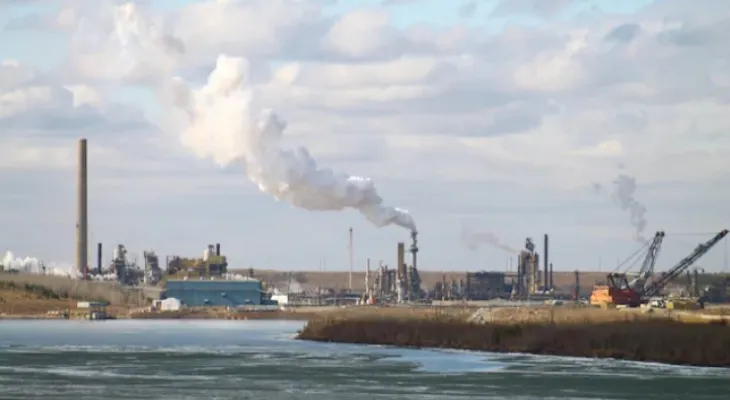Search here
Newspaper
Search here

Arab Canada News
News

Published: September 1, 2023
The oil industry group said on August 31 that traditional oil and natural gas producers in Canada reduced greenhouse gas emissions by 24 percent while increasing production by 21 percent between 2012 and 2021.
However, their analysis covers only a small part of their emissions associated with fossil fuel exploitation.
Traditional production, which uses vertical wells, does not include oil sands that make up the vast majority of Canada’s crude oil production, which is one of the most environmentally damaging productions.
Additionally, a separate independent analysis this month showed that pollutant emissions from tar sands remained stable in 2022, even with production growth.
The federal government, led by Prime Minister Justin Trudeau, also plans to limit pollutant emissions from the Canadian oil and gas sector, a step that angers the conservative Alberta government, which says such plans amount to a cap on production, which is considered a provincial responsibility.
Pollutant emissions from traditional oil and gas production reduced from the equivalent of 100 million metric tons of carbon dioxide in 2012 to 76 million tons in 2021, according to an analysis by the Canadian Association of Petroleum Producers, CAPP for short, which was based on production and emissions data published by the Canadian government.
The emissions resulting from fuel combustion account for the majority of pollutant emissions associated with oil and gas.
This reduction partially reflects the regulations in place in Alberta, Canada’s largest fossil fuel-producing province, and other oil and gas-producing provinces. These regulations aim for companies to reduce methane emissions, which are produced from burning and leaking at facilities.
For her part, Lisa Beaton, the executive director of the CAPP program, stated that traditional producers in Canada demonstrate that we can increase energy production to address energy security while reducing emissions.
However, the analysis by the Canadian Association of Petroleum Producers only includes emissions that occur during the oil and gas production process. It does not include indirect emissions resulting from the combustion of gas and oil when the company uses the fuel or when a car burns the fuel during operation. These indirect emissions represent the majority of pollutant emissions associated with oil and gas.
Caroline Brouillette, the executive director of the Climate Action Network in Canada, also stated that this research obscures the fact that most emissions responsible for the oil and gas sector are produced when burning these fuels. The continued expansion of production does not align with a safe climate.
Moreover, the oil and gas sector was the largest source of pollutant emissions in Canada in 2021, accounting for 28 percent of total national emissions.
Comments